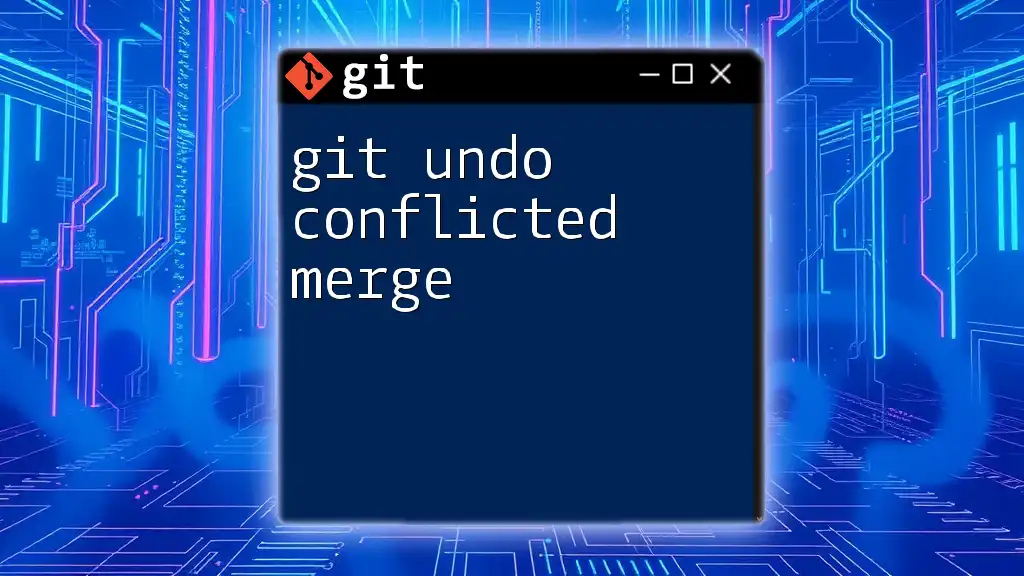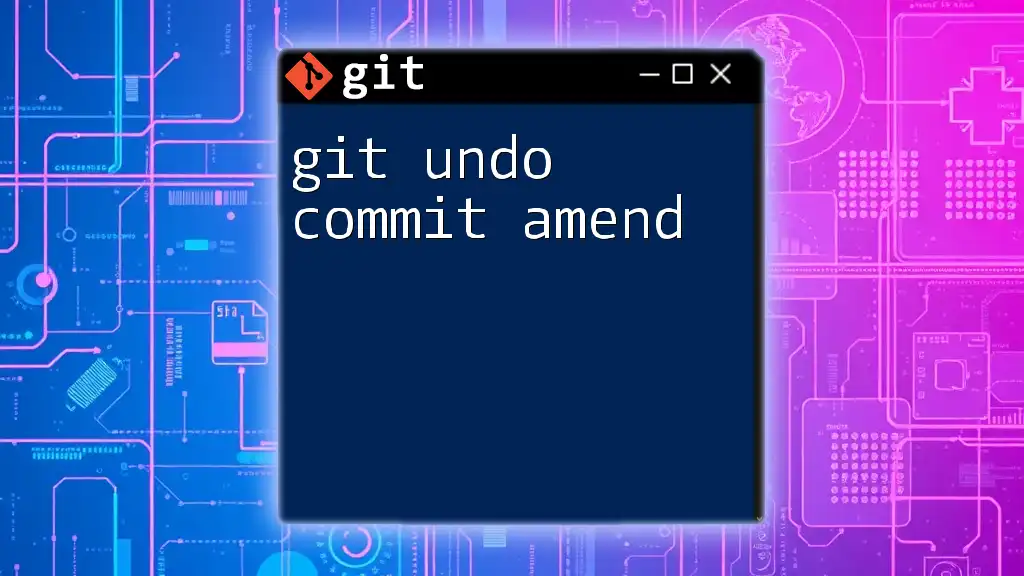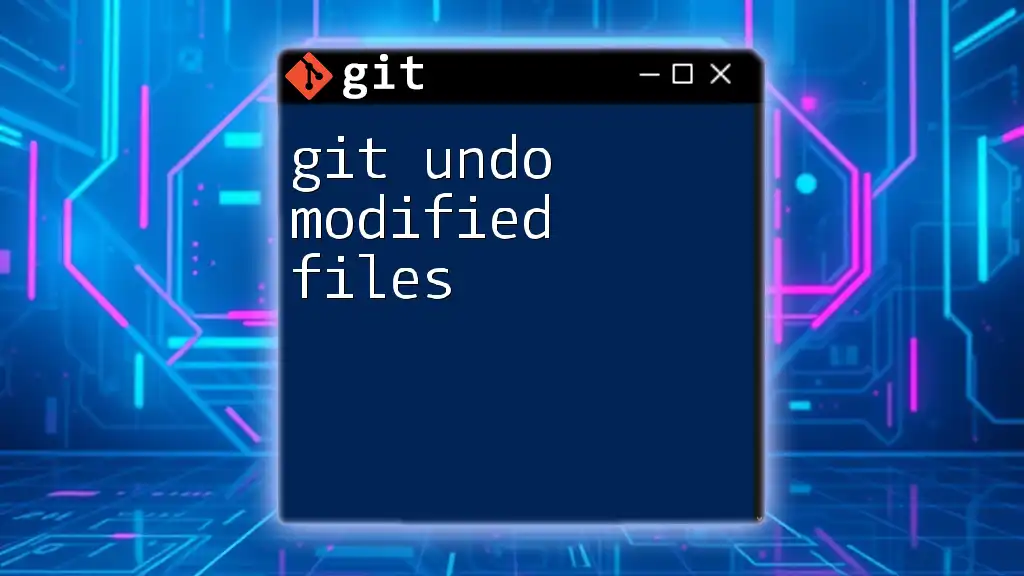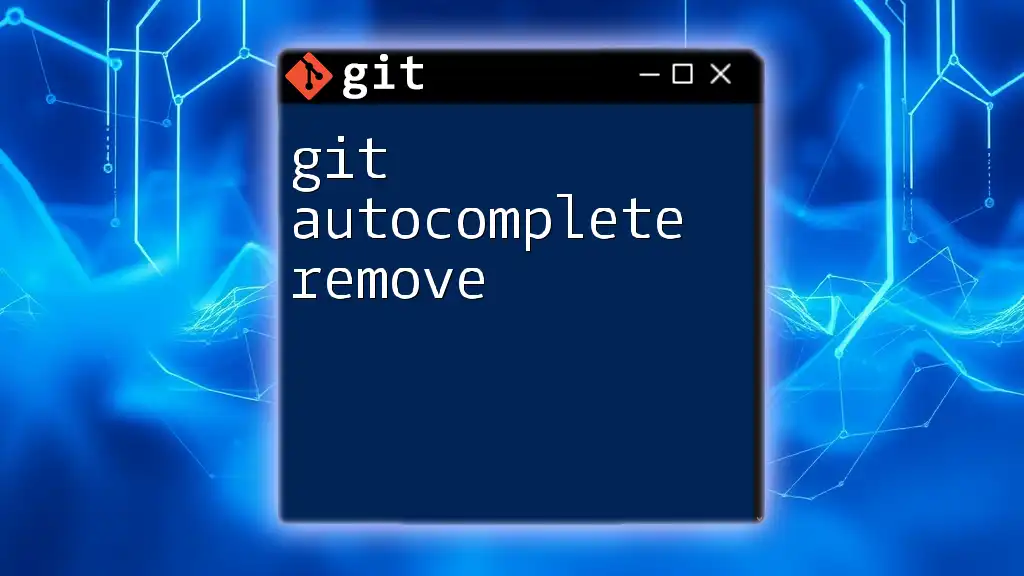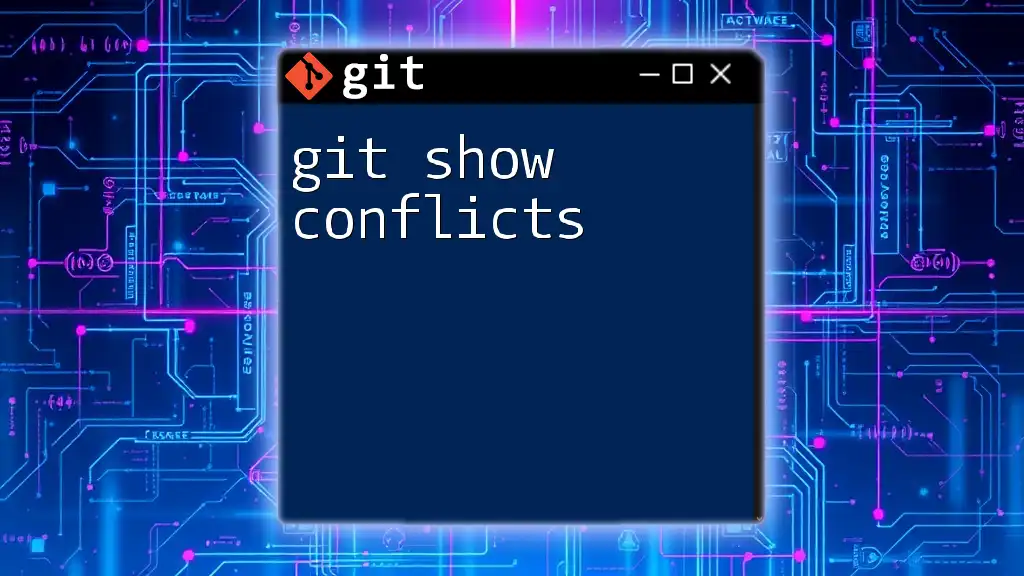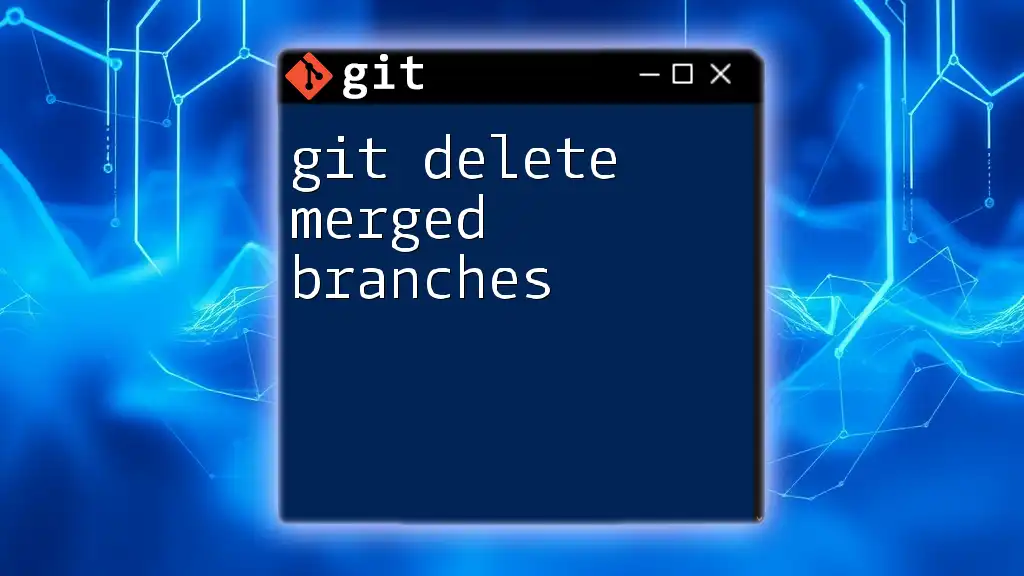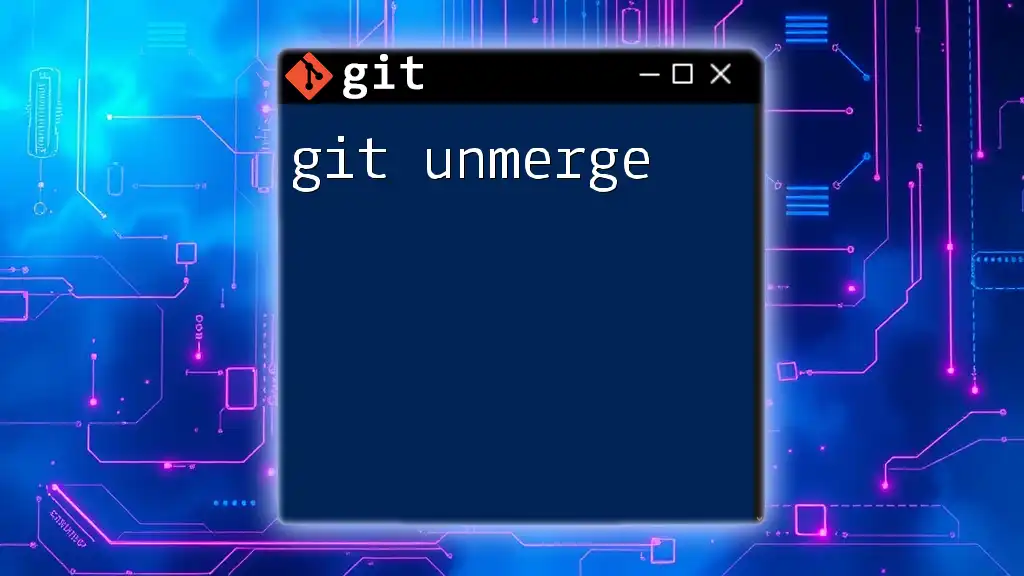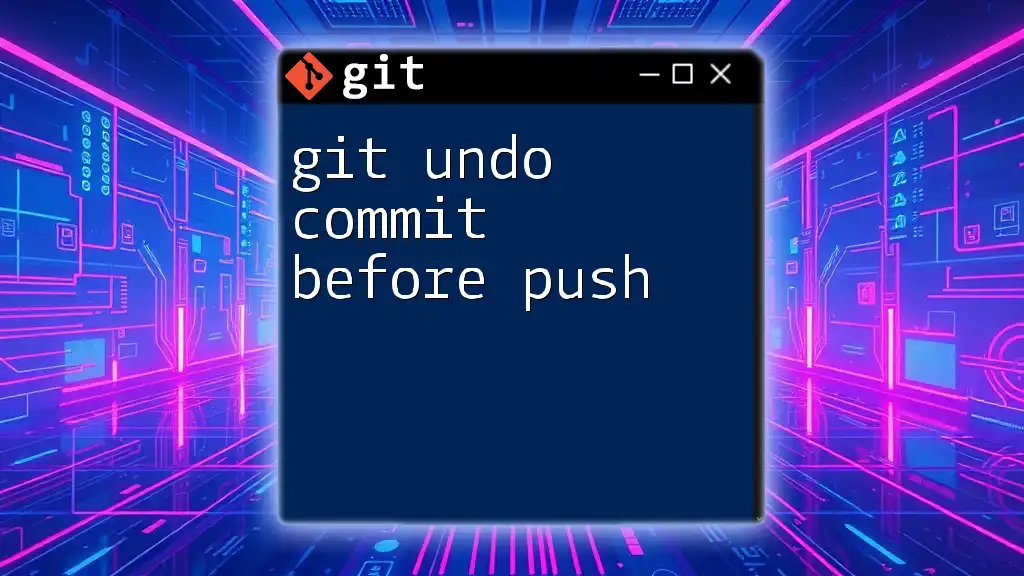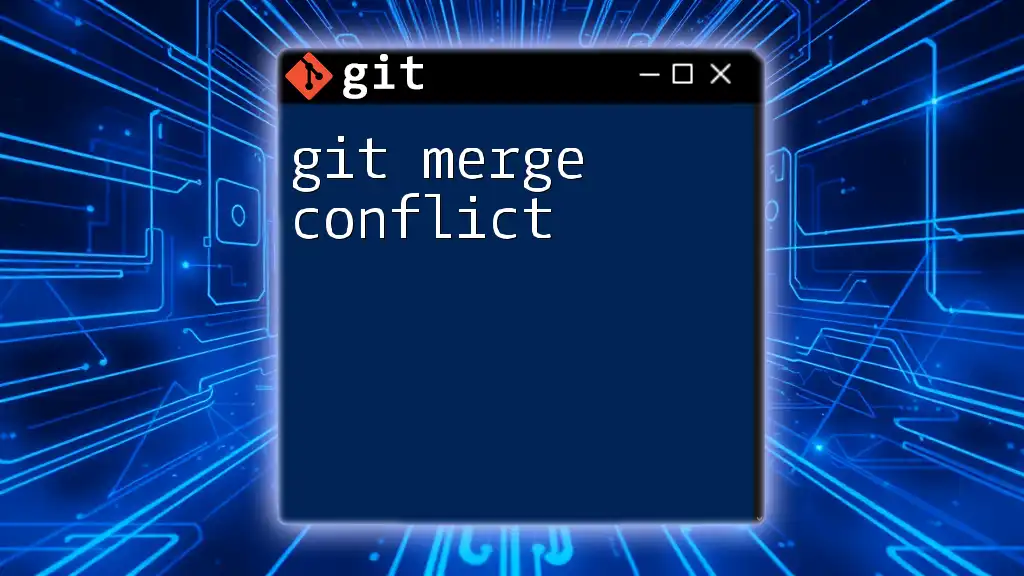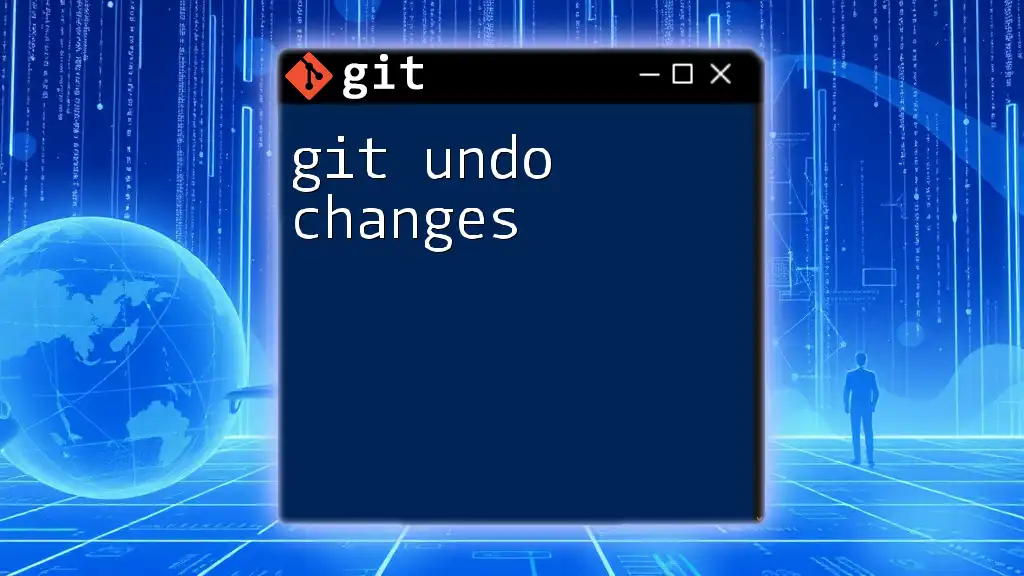To undo a conflicted merge in Git, you can reset your branch to the state before the merge attempt by using the command below:
git merge --abort
Understanding Git Merges
What is a Git Merge?
Merging in Git is a process that integrates changes from different branches into a single branch. This functionality is crucial for collaboration, allowing multiple contributors to work on a project simultaneously without overwriting each other’s contributions. When you decide to combine your branch with another, you use the merge command, which attempts to harmonize the respective changes.
Common Merge Conflicts
Conflicts typically occur when two branches have made modifications to the same line in a file or when one branch deletes a file that another branch is attempting to modify. These conflicts are often seen in active development teams where multiple features are being integrated concurrently. Understanding how conflicts arise can help you navigate them more effectively.
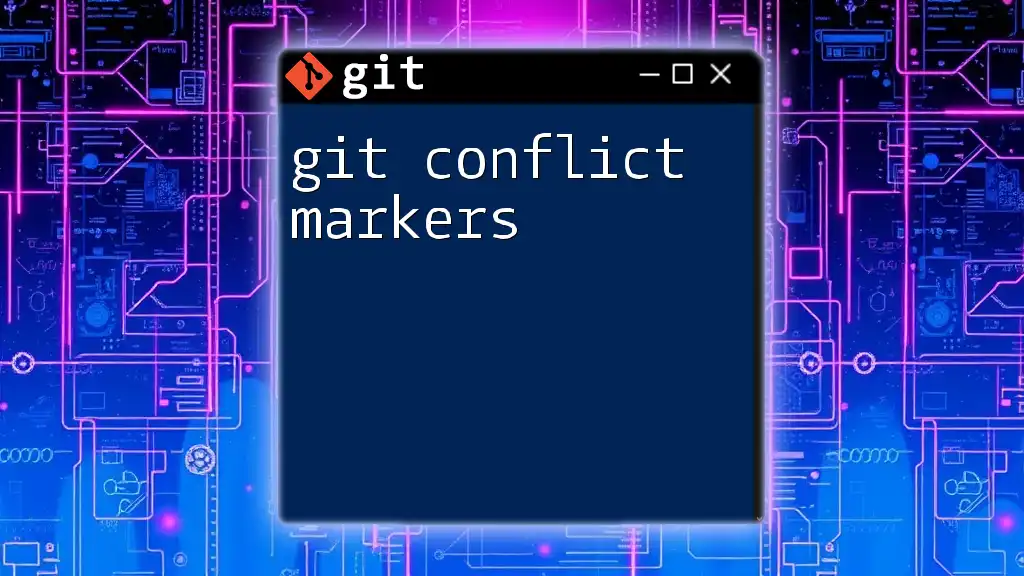
Identifying a Conflicted Merge
Signs of a Conflict
When a merge conflict happens, Git provides clear messages indicating which files are in conflict. You can use the `git status` command to identify problematic files and check the state of your working directory. Git will show messages similar to:
Automatic merge failed; fix conflicts and then commit the result.
This indicates that there are conflicts that need your attention before proceeding.
The Git Conflict Markers
In files with conflicts, Git inserts conflict markers that delineate the differing changes. A typical conflict appears like this:
<<<<<<< HEAD
Your changes here
=======
Incoming changes here
>>>>>>> branch-name
Understanding these markers is vital for resolving conflicts effectively. The text between `<<<<<<< HEAD` and `=======` represents your current changes, while the text between `=======` and `>>>>>>> branch-name` represents the incoming changes.

Undoing a Conflicted Merge
When to Undo a Merge
There are times when it’s better to undo a merge instead of resolving conflicts, particularly if the situation becomes too complex or if the changes in the other branch are not what you expected. It's essential to recognize when proceeding would cause more harm than good.
Using Git Commands to Undo a Merge
The `git merge --abort` Command
If you've decided to abort the merge process entirely, `git merge --abort` is the command you need. This command allows you to stop the merge and revert back to the state before the merge began. It is the safest method for handling a conflicted merge.
git merge --abort
Executing this command will restore your working directory to the last committed state, erasing any conflict markers and changes made during the attempted merge.
The `git reset` Command
Alternatively, if you want to regain control over the changes made up to a certain point, the `git reset` command can be useful. The type of reset you choose depends on your needs:
- Soft Reset: Use this to keep your changes staged.
git reset --soft HEAD~1
- Mixed Reset: This default option resets the index but does not change the working directory.
git reset
- Hard Reset: Use with caution; this command will remove all changes, including uncommitted ones.
git reset --hard HEAD~1
Each option has its implications; thus, understanding them is crucial to avoid losing important work.
The `git checkout` Command
In the event of conflict resolution where only specific files have issues, the `git checkout` command is useful for reverting individual files to their last committed state.
git checkout -- <filename>
Replace `<filename>` with the name of the file you wish to restore. Be aware that this will discard any changes made to that file since the last commit, so use it judiciously.

Handling Your Repository After the Undo
Verifying the Undo Process
After executing any of the undo commands, it’s crucial to verify that the conflicted merge has been resolved properly. Running the `git status` command will clarify the current state of your working directory. You can also check your commit history with `git log` to ensure you’re back to the desired commit.
Best Practices for Future Merges
To minimize the occurrence of future merge conflicts, it's recommended to:
- Pull frequently: Keeping your local repository updated with the latest changes from collaborators reduces the chances of conflicts.
- Communicate effectively: Regular discussions with team members about what each person is working on can help avoid overlapping changes.

Conclusion
Recap of Key Points
In this guide, we covered the vital commands and steps needed to git undo conflicted merge situations. You learned about `git merge --abort`, `git reset`, and `git checkout`—essential tools for managing your repository and correcting course when conflicts arise.
Resources for Further Learning
For those eager to delve deeper into Git, the official [Git documentation](https://git-scm.com/doc) is an invaluable resource. Additionally, consider tutorials and courses that focus on best practices in version control to enhance your skills further. Training in these areas can provide you with a robust foundation for effective collaboration in coding projects.

